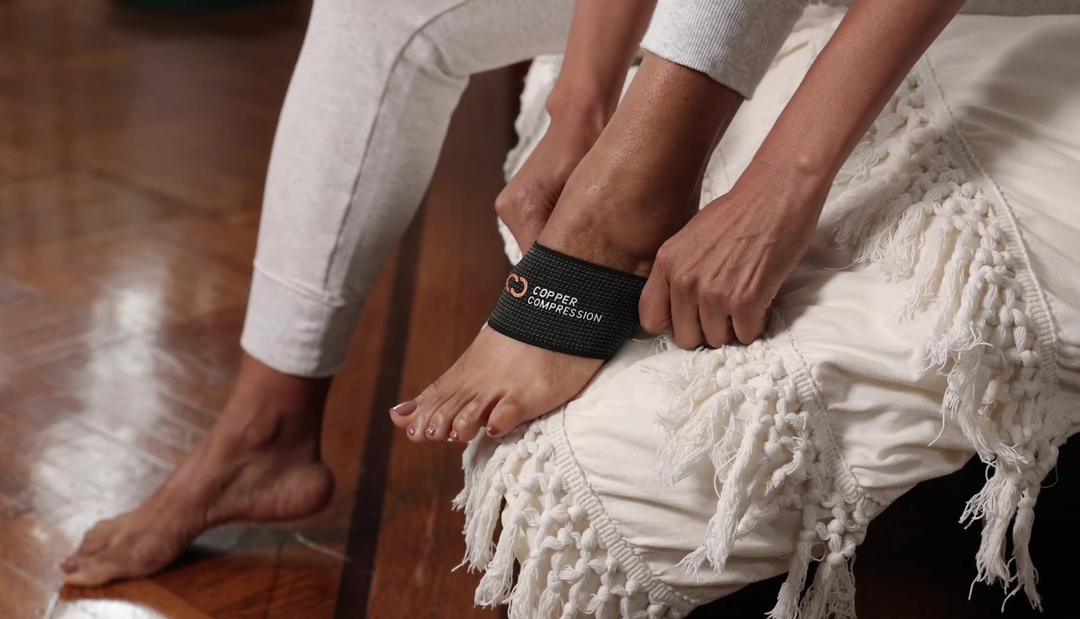What is Tennis Elbow?
Sports. What are they? Just kidding. We all know what they are.
Whether you play, watch, or have merely seen a sport, you also might know that those who play sports are a bit more susceptible to injury than others. Football, soccer, and wrestling in particular are pretty accident-prone, leading to sprains, broken ligaments, and even concussions.
Tennis, while not necessarily the most dangerous of the sports, comes with its own risk: Tennis Elbow. Repetitive movements often result in some type of injury, and swinging a heavy racket to and fro is no exception.
Get ready to learn all about Tennis Elbow, the causes (hint: it’s not just tennis), the treatments, and the wearables you can get to help you avoid or recover from the predicament that’s sweeping the sports world.
So, What is Tennis Elbow?

Also known as Lateral Epicondylitis, Tennis Elbow is a pretty painful condition that develops when our elbow and tendons are overworked after a repetitive motion in our arm and wrist. The pain is most often felt in the area where our forearm muscles attach to a bone on the outside of our elbow. This pain can sometimes travel into our wrists and forearm, too!
What Causes Tennis Elbow?
As mentioned earlier, this condition isn’t always caused by playing tennis - that’s just the most common way to get it. You can also get it if you are doing some kind of work or exercise that requires you to swing your arm in repetitive movements! Construction work, painting, cooking, plumbing, cleaning, and even gaming can also cause Tennis Elbow.
Symptoms
How do you know if it’s Tennis Elbow and not just a pulled muscle, bruise, or strain? According to the Mayo Clinic, there are a few specific ways you can tell. You may have Tennis Elbow if you feel pain while:
Does any of that sound familiar? If so, we’re sorry to say that you may have Tennis Elbow, buckaroo. Luckily for you, there are many ways to treat it!
Nonsurgical Treatment for Tennis Elbow

We’re going to start this section with a disclaimer: nonsurgical methods for fixing Tennis Elbow are not guaranteed to work, and if your pain persists you may need to see a doctor, who may suggest surgery.
Now that we’ve gotten that out of the way, time for the fun part. From at-home care to medication to exercise, here are a few ways you can take on your Tennis Elbow before making a doctor’s appointment:
Self-Care Methods
You can always try to treat your TE at home with things you have around the house. The healing time may be slower, but for those of us on the go or without time/money to see a doctor, they’re a great option!
Try these methods:
Use an Ice Pack: While you’re watching TV or relaxing, put some ice on your elbow. This can help take down some of the swelling and pain caused by TE.
Use Pain Meds: If the pain is a little much, some over-the-counter meds might help. Just don’t take them and then continue to do the movement that caused TE in the first place - that will just make things worse!
Rest: Both options A & B include resting, but this is so important that we figured we could give it its own place. One of the best ways to treat Tennis Elbow is to stop doing the motion that caused it for a while. Give your arm a chance to rest and recover.
Tennis Elbow Exercises
If you find that you want to be a little more proactive, you can always try a few easy TE exercises and stretches to help your muscles recover faster.
Wrist Flexor Stretches:
Step 1: Extend your arm out in front of you, palm facing up.
Step 2: Slowly bend your wrist until your hand is pointed towards the floor.
Step 3: Use your other hand to gently bend the wrist even further, until you feel a moderate stretch. Hold for around 30 seconds, and repeat 2-4 times.
Wrist Curls:
Step 1: Find a flat surface and place your forearm on it, hand hanging off the side with your palm up.
Step 2: Place a very lightweight (~1kg) into your hand (water bottles or canned food are good, too).
Step 3: Slowly raise the wait, palm up, keeping your forearm firmly on the table. Lower and repeat around 12 times. Switch arms and repeat.
Bicep Curls:
Step 1: Find a chair. Sit down, legs slightly spread, with the affected elbow rested firmly on the corresponding thigh.
Step 2: While holding a ~1kg weight or item, slowly curl the weight towards your chest. Repeat around 12 times. Switch arms and repeat.
Ball Squeezing:
Step 1: Find a tennis ball (or a rolled-up sock if you don’t have a tennis ball).
Step 2: Squeeze the ball, hold for about 5 seconds, then relax for 10 seconds. Repeat around 12 times. Switch arms and repeat.
Tennis Elbow Braces: Do They Really Work?
If you find that the pain you get from TE is too much to move, you may need a brace. But are they actually effective? ….yes! Case closed!
Just kidding, we’re about to get into way more detail: Tennis elbow braces are great for aiding in your recovery for Tennis Elbow, but it’s important to note that different products do different things.
For targeted compression, you should get an epicondylitis clasp. These provide pressure that forces your tendons to move in a different way, which can help your elbow recover.
For light support, try a compression elbow sleeve. These provide all-encompassing, lightweight compression all around your elbow. Great for injury prevention.
For total immobilization, you should get a supportive tennis elbow brace. These prevent any movement from your elbow, which takes the pressure off of the affected area.
What to Look For in a Tennis Elbow Brace

When looking for an elbow brace, you’ll want to find something that is adjustable, provides compression, and is able to be worn for hours on end.
Our Elbow Immobilizer Support Brace does just that! It’s perfect for keeping your elbow stabilized all day or all night. With copper-infused, moisture-wicking fabric and an adjustable hook-and-loop strap, our support brace is ideal for those suffering from Tennis Elbow.
Frequently Asked Questions About Tennis Elbow
Any questions about TE, braces, or both? We’ve got you covered! Here are the most common questions we found when researching Tennis Elbow:
How Do I Wear a Tennis Elbow Brace?
To effectively wear an immobilizer brace, you’ll want to make sure the cushion rests on your forearm muscles. The cushion should be about 3-4 inches from the tip of your elbow. Most elbow braces are adjustable, so make sure that the compression is snug to prevent movement.
For our immobilizer brace, you’ll just need to slip it on over your elbow and adjust the hook-and-loop strap to your desired compression level. Done!
How Long Should I Wear a Tennis Elbow Brace?
According to the Hand To Shoulder Center, the average recovery time is about 6-8 weeks. More serious cases can last much longer and often require medical attention. If you find your TE lasts longer than a few months, you should see a doctor for potential surgical intervention.
When Should I Wear My Tennis Elbow Brace?
OrthoTexas recommends you wear your elbow brace at night and during parts of the day when the pain becomes bothersome. Be sure to wear it during any physical or strenuous activity.
How Tight Should a Tennis Elbow Brace Be?
This really depends on your comfort level. The general consensus is that it should not be tight enough to restrict blood flow, while being tight enough to provide compression and stabilization. If you find that your hand or arm is tingling, numb, or discolored, loosen the strap immediately!
Final Thoughts
Whew! That was quite a bit of info. We hoped this has helped you tackle Tennis Elbow head-on. TE can be a (literal) pain - but don’t let it take over your life! Also, don’t forget to check out our website and blog for more educational tidbits, sensational sales, and more.








